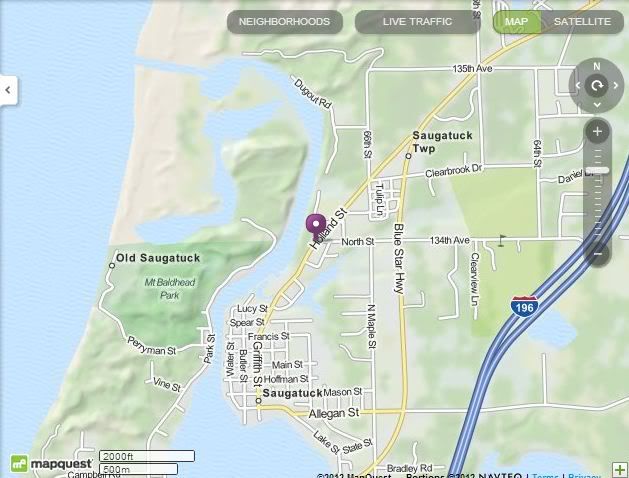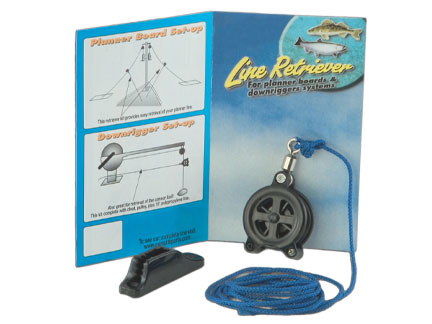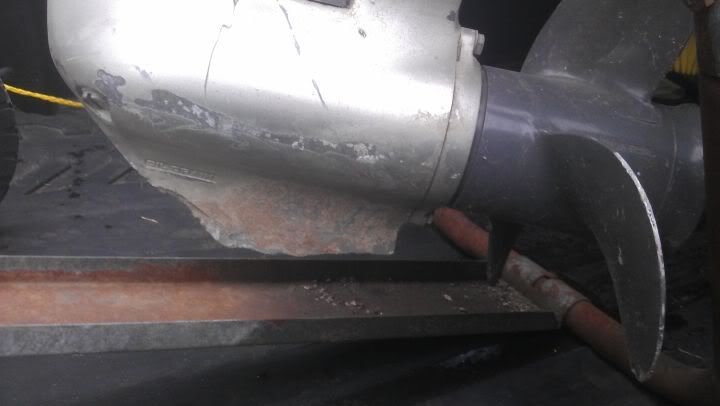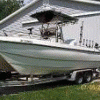-
Posts
844 -
Joined
-
Last visited
Content Type
Profiles
Forums
Events
Store
Gallery
Posts posted by SeaCatMich
-
-
what the different in the x4D..??
It adds actual depth of the probe to the readout.
-
Brian, I really like these. Have not tried them on Walleye yet but am very pleased with them on salmon. Love the adjustment. (also really enjoy helping people spend their money).
http://www.downriggerrelease.com/
Paul C.
The Chamberlains work even better on walleye. Especially nice that they will trip on small walleye or the other small fish that could get towed around otherwise.
I also use them on salmon from spring through fall and have no trouble with pulling spoons, plugs or flashers.
If you are considering changing rigger releases, these are hard to beat.
-
I know that many of us have already put their boats away for the year, but I received this in an eMail from BoatUS and thought it would be good information for GLF.
I have been holding off, hoping to get one or two more trips in but so far the weather has not cooperated. With gas prices now down to around $3.30/gallon I'm seriously considering topping it off adding the Stabil and getting it ready for winter in the pole barn. The first big snow storm out west means it isn't too far from that time here too.

*********************************************************
Putting a Boat Away for the Winter?
What You Need to Know About E-10 Gas
ALEXANDRIA, Va., October 23, 2012 - Nearly full tank or nearly empty tank? That is the big question facing boaters now in the midst of preparing their boats for the long winter hibernation. The concern is ethanol - an octane enhancing gasoline additive that has some unfortunate, harmful side effects on marine engines. Boat Owners Association of The United States (BoatUS) has some tips learned from fuel industry insiders on how to store a boat with E-10 gasoline (containing 10% ethanol) over the winter.
- The octane issue: Some boaters choose to leave their boat's gas tank mostly empty over the winter, and then refill in the spring in the hopes of "refreshing" the fuel to regain any octane loss. However, a nearly empty gas tank introduces a bigger problem: the strong possibility of phase separation with the E-10 gas. Incidentally, over long winter storage periods, E-10 gasoline loses octane at about the same rate as non-ethanol gasoline.
- The path to phase separation: Ethanol (an alcohol) can attract and absorb water - about 10 times more than regular gasoline - and still burn harmlessly through the engine. However, there comes a tipping point when the ethanol can no longer absorb the water, and the alcohol will separate out or "phase separate" from the gasoline. When this happens, the solution of water soaked ethanol will settle to the bottom of the tank, which is where the engine's fuel system pick-up is located. Can you see where we are headed with this?
- More water, less absorption: The problem with leaving a tank mostly empty is that it increases the tank's "lung capacity" to breath in moist air (water) through the tank's vent. If the tank is mostly empty over the winter, there will also be less E-10 gas in the tank to absorb the moisture. This combination of more water and less capacity for absorption greatly increases the chances of phase separation. Adding fresh gasoline in the spring would not remedy the problem - the phase-separated ethanol remains separated at the bottom of the tank.
- The Water Separator issue: E-10 can hold up to 1/2 percent of water by volume and up to that concentration the water molecules will dissolve in the gasoline forming a soluble mixture that will pass through a water separator and burn harmlessly in your engine. The only time water will collect in a tank and not be absorbed is if phase separation has occurred, and by then it will be too late. A water separator is not a solution to the phase separation problem.
- The Fuel Additive issue: Fuel additives are good for many reasons and should be used when laying up a boat for winter, but no additive will stand up to a good-sized slug of water. And once too much water has entered the tank and the gas has begun to phase separate, no additive will return the fuel to its original state. The only solution to phase-separated gas is to have a professional drain the tank and start anew.
The best advice for storing E-10 in your boat's gas tank over winter:
Keep the tank nearly full. This greatly reduces the volume of moist air that can enter the tank via the fuel tank vent when temperatures fluctuate in the fall and spring. With any fuel, an antioxidant (found in many additives) will help keep it fresh during lay-up. Finally, never plug up a fuel tank vent - it creates pressure that could cause dangerous leaks in the fuel system.
For more information go to http://www.boatus.com/seaworthy/ethanol.asp. A free, downloadable winterizing checklist is available at http://www.BoatUS.com/seaworthy/winter.
- The octane issue: Some boaters choose to leave their boat's gas tank mostly empty over the winter, and then refill in the spring in the hopes of "refreshing" the fuel to regain any octane loss. However, a nearly empty gas tank introduces a bigger problem: the strong possibility of phase separation with the E-10 gas. Incidentally, over long winter storage periods, E-10 gasoline loses octane at about the same rate as non-ethanol gasoline.
-
A buddy over in Chicago bought a 2007 28' Whaler Conquest with twin 225 Verado outboards this past spring. He had no trouble trolling with them this past summer. I'm pretty sure that all of them have the digital throttle control to allow RPMs to be adjusted in very small amounts -- 25 or 50 RPMs at a time -- which is great for adjusting speeds when trolling. 275 HP should do the same with the bigger hull.
-
I suggest going to the local convenience store and investing a few $$$ in Power Ball or Mega Millions tickets. For more instant gratification, the Cash for Life instant games might work too. You could then get both boats... plus a pair to put down in the Florida Keys too. Would not have to worry about that inconvenient little button and arguing as to which one you have to pay taxes on.

-
I have the X4 transducer and my Raymarine DSM250 50/200 mounted with about 5.5' of separation (one on each hull on the cat) and run it in 50 KHz mode most of the time when trolling and the gain up at 80%+. No problems at all. On my previous V hull boat the FH 840 transducer and the FF transducer were about 2.5' apart without problems. The X4 and the 840 use the same frequency and transducer.
I think that I'd probably mount the FH transducer on the side you most likely will use the probe but that may not matter either. I have mine on the port side with the display near the port transom downrigger so that it is easy to move the ball/probe up/down and see the display. When that rigger had a problem I did use it without problems on the starboard transom rigger and the outdown on the port side without problems. Have not used it with the starboard outdown but the other two are a good 5' farther away than the "normal" location.
Good to hear that your current FF transducer position works well. Many boats wold have issues with good readings on plane in that location.
-
Best part to me is that it was caught while small mouth bass fishing with a minnow -- that accounts for the 2 hours to land it. So much for giant spinners or Believer & Swim Whiz jerk baits for Muskie!
-
Looking at your boat's transom, I think I would do the following:
1. Mount the FH triducer where the old one was on the port side. When you are trolling on the kicker having the FH triducer near the big motor shouldn't be an issue. When running with the big motor, the FH triducer should still work fine for surface temperature readings which is what you're looking at anyway.
2. I would consider moving the FF transducer to where the old unused/broken mount is at. With its current location in front of the main OB prop and close to the centerline of the hull, I would suspect you might be having trouble getting good readings under power due to turbulence of the big OB's prop. The starboard side of the OB is best for the transducer, but having it a minimum of 3" outside the prop spin radius usually gives the least potential for problems.
Mounting the FH triducer where the old broken/unused mount is on the starboard side will also work. Neither OB will affect it there and you shouldn't have any problems with the signals from the FF transducer -- the FH frequency is 70 KHz which is not close enough to the FF's 50 or 200 KHz to be a problem.
-
I run 300' of 150# stainless wire by Scotty on my Vector and Big Jon riggers. I don't really think that there are significant differences between brands of rigger cable. In the old days (30 years ago) the stuff was very springy and it was relatively easy to get kink in the cable if you got any slack in the line but I have not had that problem in a long, long time.
As for the termination of the wire I have used the Magna Dyne Klincher connector for 20 years without any problems. Much better than the old crimp sleeves and thimble... and a whole lot easier to put on the wire.
Picture of the Klincher:

-
Thanks for the heads-up. One more thing to do before it gets cold. I wish I had known earlier though. My '07 Avalanche had a 12 month bumper to bumper warranty on it as a Certified GM vehicle when I bought it -- of course that ran out in June

Back in '06 I had to use the spare on my '02 Avalanche. It was an adventure to get the spare off the truck. The guys at Discount Tire put it back in the mount after fixing my bad tire... I wasn't looking forward to doing that either.
What I don't understand is with this being an ongoing problem, why hasn't GM fixed or replaced the system. With all of the regulators out there for the auto industry, why hasn't this been publicised as a major issue? Seems like a working spare tire storage system would be sort of important!
-
Woody's wax is an easily applied wax made for textured floors of boats so that it is not slippery. Apparently it does a great job of keeping the crud from sticking so that the schmutz comes off with the washdown and does not require a power washer.
I have used Woody's Wax in the past and it does a good job of making the textured decks easy to clean. I actually need to do it again to my boat's decks as it has been three seasons since my last application. It is a very good product.
-
Here is the address listed on the auction: 6269 Riverside Dr
Saugatuck, MI 49453

-
It shows on google maps as being on the river between town and the Lake Michigan.
-
Can anyone tell me about Deep Harbor Marina on the river in Saugatuck? There are a couple of slips there that are for sale in an auction. Is it a good place for fishermen? Water depth? Well maintained? Affected by big lake wind/waves?
Thanks for any insights!
-
I used the 10' white Cabela innerflows for many years as my braid diver rods. Also used the 8' versions for mono riggers. Didn't like that they yellowed over time and when the spiney water fleas got bad in mid to late July they would clog the end of the rods and were a real PITA. Other than that I really liked the rods.
Also Had a set of 4 Daiwa 7' innerflows too that I picked up used a few years later. The next year I moved away from the lake and didn't get to use them much so i resold them.
Not sure how the insides and tip would hold up to wire but if we didn't have the flea issue I would probably still be using them.
-
The Vectors and Brutes both have booms that can be lifted to allow the weights to be swung/swinged
 in to be set. But on the Vectors with the 5' booms I have Traxstech weight retrievers that I use when I run 12# or heavier weights -- the 5' booms with the heavier weights are a little difficult to lift (especially in 3' seas).
in to be set. But on the Vectors with the 5' booms I have Traxstech weight retrievers that I use when I run 12# or heavier weights -- the 5' booms with the heavier weights are a little difficult to lift (especially in 3' seas). Walker did offer an automatic weight retriever system on some models that would bring the weight back to the spool along the boom. Not sure if this can be added to ones that didn't come that way. Here is a picture:

Here is a picture of the Traxstech weight retrievers:

-
See how the long arms do off the corners facing straight out the back. I would think on the kicker side the boom will extend beyond the kicker. If it does work then replace the short arms with long for use as outdowns. I understand what others are saying about only running two riggers with the fish being more distributed throughout the water column, but there have been quite a few times in the last few years where the fish are very deep (120'+) and to me, downriggers are the most effective tool for those deep presentations. Put them on a removable base or track mount and take them off when you don't need depth.
I run four riggers on my boat. 4' arms out the back with Big Jon Brutes mounted on Traxstech bases that I angle out 30* to get them away from the outboards. The other two are outdown Vectors with 5' booms that are mounted 3' forward of the rear ones. All of them are on tracks and I can easily change the configuration out to fit the situation.
-
i was using vanish fishing line for my leaders and switched to seaguar leader and i did notice i was getting more hits. im fishing for walleye in lake eries central basin. and i plan to stick with the seaguar. just my opinion.
sherman
Maybe Berkley has improved it, but when I first tried fluorocarbon line it was the Vanish. It was terrible. Didn't knot well, poor durability, inferior breaking strength. It took me another 3 or 4 years to try fluoro again. Sorry Berkley, but I'm not planning on spending my money on it again to see if it has improved. Other brands... Cabelas, Seaguar, PLine, Rapala, Vicious... have all been much better quality.
-
I made some calls today and was really amazed at the variance in costs quoted. The local "marina" here in Lansing said a new skeg would be around $30-$40 but it would be $280 to $320 to install it. A place down near Gibraltar that was recommended via a PM was $30 for the skeg and $100 to install. I can afford to drive a couple hours at that cost difference

-
Check out First Marine. They have a good number of weld on replacement skegs. Most good fab/weld shops will handle this task.
Where is First Marine located? Do they have a web site?
-
I use fluoro 20# line for my leadcore and copper leaders because of the transparency. For fly and meat rig leaders I use 40 & 50# leader material for the stiffness and durability. At this past spring's fishing shows I found what I thought was a pretty good price ($9) on the heavy fluoro leader in 50 yard spools by Rapala. I'm not sure I would spend the $40 for the 50 yard Seaguar leader material.
I don't know that there is a significant difference between the line and leader material for what we use it for.
-
Here is a picture of the damage.

-
I have an opportunity to buy a Honda 30 HP outboard but its skeg is broken. I know that they can be replaced/repaired and have used something similar to the Skeggard product in the past, but Skeggard does not offer a model for the 30 HP Honda.

- Does anyone know of something that would work?
- How big of a deal is it to have a new skeg welded on?
- Any idea how much it should cost?
- Any suggestions of where to go in the mid-Michigan area (Lansing, Flint, Grand Rapids, Kzoo, Muskegon ???).
Any other suggestions?
- Does anyone know of something that would work?
-
Had a friend that was very interested in an IntelliTroll early this summer. Based on poor performance and limited success in getting them fixed with Cannon, I suggested he go to the Depth Raider, SubTroll or X4 but he really likes his Cannon riggers and wanted one. Could not find one and none of the shops knew when they would be getting them. I called Cannon for him and was told that the product was discontinued and no more would be made. He ended up with an X4 and like me, is very happy.
With addition of the actual probe depth added to the X4 with the X4D model it is the uncoated cable equivalent (feature wise). The later models of the IntelliTroll were much better, but the first models had lots of problems and apparently could not be overcome.



wire rig shopping list
in Salmon Pro's Connection
Posted
I have used a variety of different snap swivels (Sampo, Dreamweaver, Opti, Torpedo...). I really like the design of the Torpedo snaps better than the others. They are actually a different design that all of the other brands. Unlike the others, a fish/lure pulling on the snap actually keeps tension on snap where it clips closed. I also like the fully rounded nose which I think gives the lures the best action. Cost wise they are actually cheaper.
For small spoons I use the #1, for large spoons and plugs the #2.